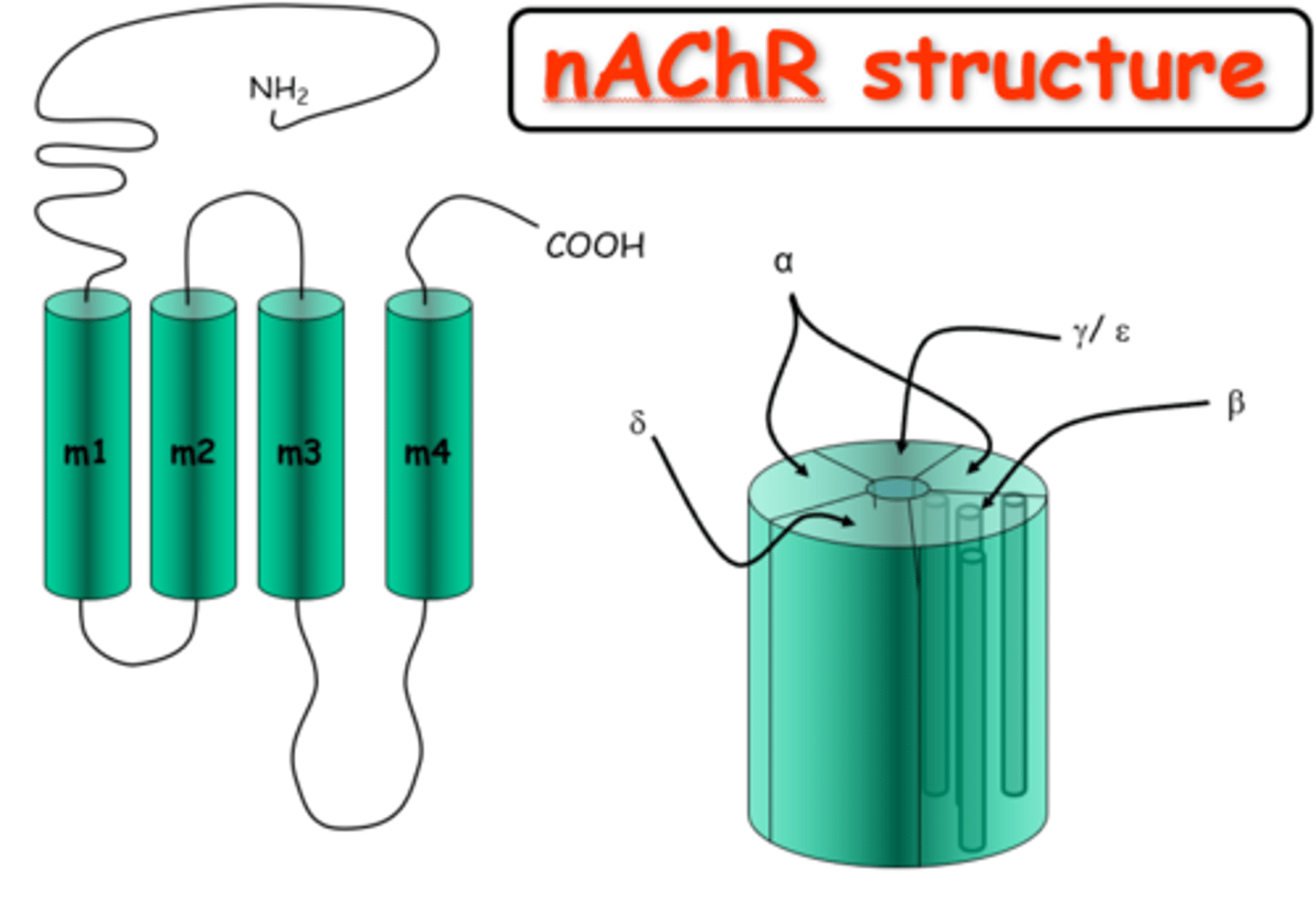Ionotropic and Intracellular Receptors
1/14
There's no tags or description
Looks like no tags are added yet.
Name | Mastery | Learn | Test | Matching | Spaced |
|---|
No study sessions yet.
15 Terms
What is an ionotropic receptor?
-AKA ligand-gated ion channel
-Upon agonist binding, the receptor opens allowing molecules to enter
What are key examples of an ionotropic receptor?
-Nicotinic receptors
-GABA receptors
What is a key example of a metabotrophic receptor?
Muscarinic receptors.
Which type of mediators are always reversible, agonists or antagonists?
-Agonists
-Antagonists can be irreversible or reversible
What is the difference between irreversible antagonists and reversible antagonists?
-Reversible antagonists can be removed from the target receptor somehow (e.g. d-tubocurarine)
-Irreversible antagonists can not be removed from the target receptor, blocking other mediators binding (e.g. alpha-bungarotoxin)
Describe the action of a classic snake bite toxin
-Toxin injected by snake (e.g. alpha-bungarotoxin)
-Blocks nicotinic acetylcholine receptor of NMJs
-As it is an antagonists is blocks acetylcholine from binding and stops muscles from contracting
Outline the structure of the nicotinic acetylcholine receptor (nAChR)
-5 subunits: 2 alpha, 1 beta, 1 theta, 1 either gamma or epsilon
-Each subunit has 4 transmembrane domains
-Pentamer
-ACh binds to the alpha subunits

Would you rather have a reversible or irreversible mediator for surgical anaesthesia? Why?
-Reversible
-So you can reverse its effects if surgical complications occur
Explain the receptor reserve?
-Maximum agonist response can be obtained with only a few receptors occupied
-I.e. Not all receptors need to be bound to get maximum agonist response
What is an inverse agonist?
An agonist that decreases the activity of the receptor from basal level (for example, there would be a decrease in the production of cAMP with an inverse agonist but an increase in its production with an agonist).
How does an inverse agonist differ from an antagonist?
An inverse agonist reduces the activity of a receptor where as an antagonist has no efficacy to the receptor.
What is an allosteric modulator?
-Substances that bind to cell receptor and alter receptor's affinity for specific drug
-They do not bind to the same site as antagonists or agonists
What are intracellular receptors?
-Bound by hormones that are lipid-soluble
-Receptor then acts as a transcription factor, causing a change in gene expression
-E.g. testosterone and oestrogen enter the nuclei of target cells, bind to DNA, and stimulate transcription of certain genes
Give an example of when intracellular receptors are used
All corticosteroids action.
List the functional domains of intracellular receptors and what they do
DNA-binding site:
-Bind to specific regions of DNA
Ligand-binding domain:
-Allow binding of ligands to stimulate release of the inhibitory protein above the DNA-binding site allowing receptor to bind to DNA
Transcription-activating domain:
-Causes transcription of a particular gene upon activation
